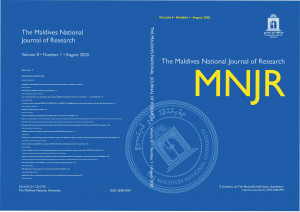Islam and Radicalism: A Brief History
DOI:
https://doi.org/10.62338/hyphct65Keywords:
Islam, radicalism, Medina constitution jihad, tolerance, Maududi, Qutub, Al-Qaeda, ISISAbstract
This article explains the nature of of Islam and its tolerance. It sheds light on Medina constitution as one nation in order to understand the relation between Muslims and non-Muslims in the state of Medina. Jihad has long proven to be one of the most controversial terms therefore, the study sheds light on the violent interpretations of jihad by two radical Islamic scholars Abul A’la Al-Maududi and Seyyid Qutub. Their call for unrestricted war against the enemies of Islam has had a direct influence on extremist militant groups like Al Qaeda and ISIS who have carried out terrorist attacks on an international scale, delegitimized the existing Muslim governments, and called for the restoration of the caliphate throughout the Islamic world. The understanding of jihad should be conducted with an awareness of the controversial nature and the ambiguity surrounding the concept in the modern context of terrorism and religious extremism. In response to the propagators of the offensive theory of jihad who keep feeding the already circulating misconceptions about Islam as a violent and intolerant religion, I provide scholarly evidence to the centrality of peace and tolerance in Islam.
References
Abou El Fadl, K(2007). The Great Theft: Wrestling Islam from the Extremists. CA:
Harper Collins.
Abu D.S & Abi Dawud. A (2009) Beirut: Dar al-Ma’rifah.
Al-Bukhari, M. I, Saheeh al-Bukhari. Beirut: Dar al-Kutub al-Elmiyyah (2012).
Ali, M (2016). The Roots of Religious Extremism: Understanding the Salafi Doctrine of
Al-Wala’ wal Bara’. London: Imperial College press. Ali, Yusuf. The Meaning of The
Holy Quŕān. Maryland: Amana Corporation, 2000.
Al-Umari, A. D (1995) Madinan Society at the Time of the Prophet, Virginia: International
Islamic Publishing House.
Al-Tamimi, Aymenn Jawad (2014). The Dawn of the Islamic State of Iraq and Al-Sham.
Current Trends in Islamist Ideology. p 5-15.
A-Nawawi, Z.Y.S & Riyadh. S.R (2011) International Islamic Publishing House.
Aslan, R (2005). No God but God: The Origins, Evolution, and Future of Islam. NY:
Random House.
Aziz, Z (2007). Islam, Peace and Tolerance. UK: Ahmadiyya Anjuman Lahore
Publications.
Burke, J (2004). Al-Qaeda: The True Story of Radical Islam. London: I.B. Tauris & Co.
Cortright, D (2008). Peace: A History of Movements and Ideas. NY: CUP.
Durant, W (2011). The Age of Faith: The Story of Civilization. New York: Simon and
Schuster, vol. 4.
Hussain, A (2012). “Confronting Misoislamia: Teaching Religion and Violence in Courses
on Islam.” Teaching Religion and Violence. Ed. Brian K. Pennington. NY: OUP,.
Irving, T. B (1979). “Terms and Concepts: Problems in Translating the Quran.” Islamic
Perspective: Studies in Honour of Maulana Maudoodi. Eds. Khurshid Ahmad and
Zafar Ishaq Ansar. Leicester: The Islamic Foundation.
Karch, E (2006). Islamic Imperialism: A History. New Haven: Yale UP.
Maududi, A. A (2006). Jihad in Islam. Lebanon: Holy Koran Publishing.
Pickthall, Marmaduke (2014), Cultural Side of Islam. Idara Impex: New Delhi.
Quddus, J (2005). “Islam, Terrorism and the New World Order.” Religion, Power and
Violence: Expression of Politics in Contemporary Times. Ed. Ram Puniyani. New
Delhi: SAGE Publications India Pvt Ltd.
Qutub, S. Maalim fi-l-Tarik. Ramallah (1987,: Dar al Kutub-al-Thaqafiya.
Said, A., N. C (2001). Funk, and S. A. Kadayifci. “Islamic Approaches to Peace and
Conflict Resolution.” Introduction. Peace and Conflict Resolution in Islam: Precept
and Practice. Eds. Lanham, MD: University Press of America.
Shah, N A (2008). Self–Defense in Islamic and International Law: Assessing Al–Qaeda
and the Invasion of Iraq. NY: Palgrave Macmillan.
Shiraz, M (2016). Salafi-Jihadism: The History of an Idea. London: Hurst



